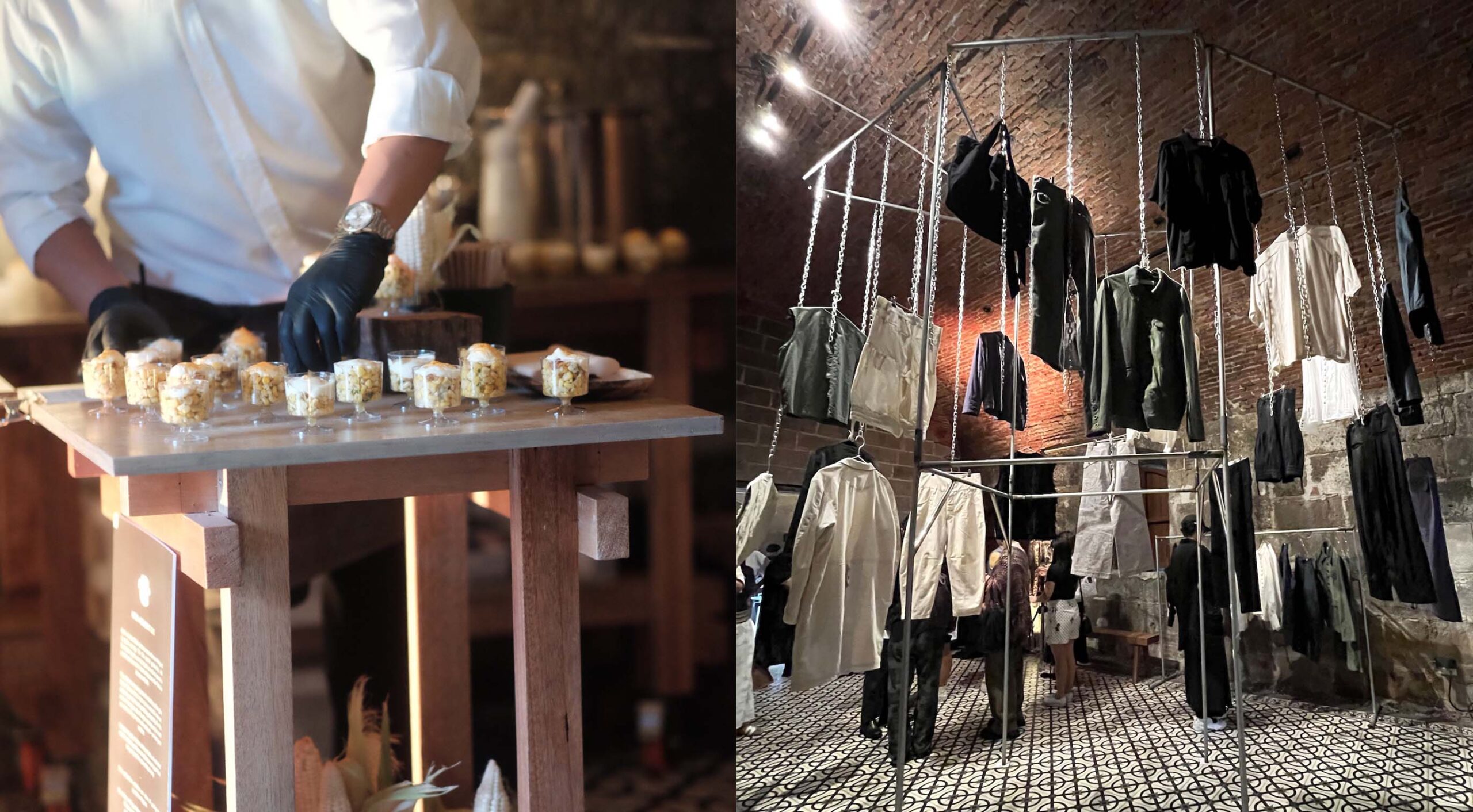Cooking in banana leaves is very Filipino.
Not only is it a rustic-looking practice, but the leaves create an organic pouch that also provides a delicious aroma to the food cooked in it. Pinais works similarly to en papillote, the French technique of cooking in pouches of parchment paper that allows food to steam in its own juices. In the case of the former, the leaves act as both a cooking vessel and a moisture sealant, allowing the food to keep its freshness longer.
Aside from banana, other indigenous leaves can also be used for wrapping purposes: taro (gabi), alagaw, squash, turmeric, coconut palm leaves, pandan leaves, squash, kulis, petchay, mustasa, and mango leaves. They are organic cooking receptacles that can be buried with embers or steamed in a pan.
Aside from the flavor they impart on the food, they also make for rustic packaging art. Most that are used for wrapping are inedible, but gabi leaves are delicious when cooked in coconut milk. The Maranaos, an indigenous tribe from various parts of Mindanao, line their cooking pots with cinnamon leaves to prevent fish from burning. Banana and dapdap leaves meanwhile make for good lining when cooking rice or rice-flour batter, protecting the grains from crusting or sticking to porous clay pots.
In the provinces, the sight of folded banana leaves is a sure sign that someone’s cooking is about to be done. The leaves, stripped from the midribs, are exposed briefly to heat, usually from burning firewood so that they become tender and pliant before being folded and bundled up in neat stacks.
Pinais works very similarly to en papillote, the French technique of cooking in pouches of parchment paper that allows food to steam in its own juices.
Before there were plastic bags and aluminum foil packaging, banana leaves were also shaped into a cone and stuffed with noodles and other panciteria specialties to take home. Unlike other herbs that are chopped up and sprinkled or mixed with the food, the banana leaf is cleverly wrapped around cooked food to allow its flavor to seep into the dish.
The young leaf, usually light yellow-green and just bursting from the bud, is the sturdiest. With proper handling, folding, tying, and cooking, one can use it for more delicate dishes like suman, steamed dilis, or grated young coconut with prawns. It has a more delicate flavor and aroma; the mature, dark green leaves, on the other hand, give a light bitterness to cooked food.
Moreover, they are rich in epigallocatechin gallate, a potent antioxidant. This may explain the banana leaf’s ability to prevent the quick spoiling of food when it is wrapped or cooked in leaves. This cooking technique has been practiced since the earliest forms of civilization; evidence found in the southern regions of France shows that people had steamed their food in leaves as early as during the Neolithic period.
In the case of pinais, the leaves act as both a cooking vessel and a moisture sealant, allowing the food to keep its freshness longer.
Not only do they make for a practical cooking device, they are also convenient and inexpensive plates. Used in this manner, the banana leaves are called damputan (from the word dampot, meaning “to pick up something with one’s hands”). Moreover, they can serve as a blanket for grilled meat, lining for baking and steaming rice cakes like puto and bibingka, stuffing for lechon (roast pigs) to enhance its flavor and to keep the stomach’s shape while roasting, a disposable brush for basting, and a covering to keep flies away.
There are multitude ways people can employ and rely on these foliage for cooking and food preparation. No equipment or cooking contraption can ever match the advantages they give.
Originally published in F&B Report Vol. 13 Issue 1












































